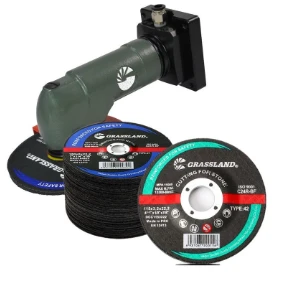

When it comes to wielding expertise in practical applications, understanding the mechanics of flap-discing on aluminum is essential. It's often recommended to employ an angle grinder at lower RPM settings because excessive speeds can lead to rapid heat generation, exacerbate loading, or result in uncontrolled material removal. Applying even and moderate pressure throughout the grinding process, alongside regular checks for disc damage or loading, is paramount for maintaining surface integrity and achieving the desired finish. In highlighting successful applications, industries ranging from automotive to aerospace rely heavily on flap disc technology owing to its precision and reliability. Fabricators working with aluminum can confirm that the right combination of material, grit, and quality can significantly streamline workflow, enhance product quality, and ensure structural stability. On the frontier of sustainable practices, ongoing advancements are being realized in flap disc technology, especially in terms of eco-friendly materials and production methods. As manufacturers push the envelope on reducing carbon footprints and promoting recyclability, users can expect to witness a greater variety of high-performance, environmentally conscious options. Ultimately, the key to executing an effective aluminum surface treatment lies in informed selection and application practices. Through the combination of experience-based insight and product knowledge, welders, metalworkers, and fabricators can safeguard the quality of their outputs while optimizing the operating life of their flap discs. In summary, the intelligent pairing of equipment to task not only boosts productivity but also reinforces the quality of craftsmanship expected in professional trades.
Post time:Feb - 18 - 2025
















